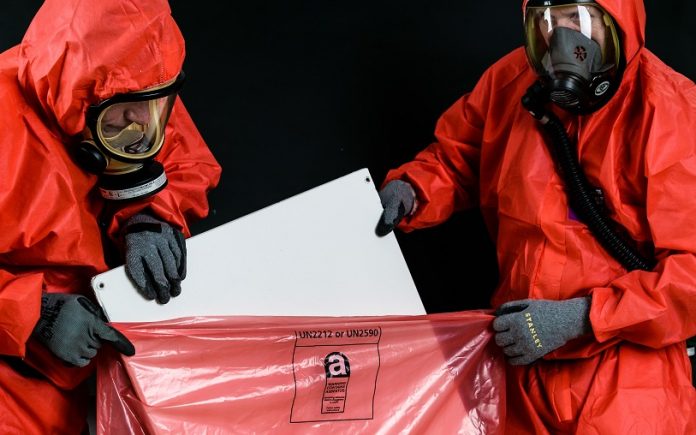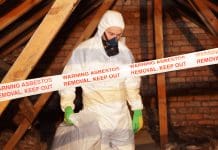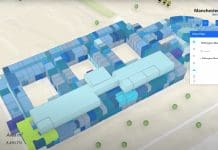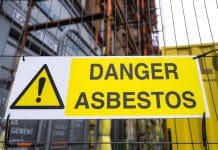Chief Executive Steve Sadley explains the responsibilities clients have when managing asbestos and how ARCA’s audit scheme provides reassurance
Whether owning one premises or a large portfolio of premises constructed before the year 2000, property owners face the issue of managing asbestos, to ensure that nobody is exposed to health or safety risks as a result of its presence.
The Health and Safety at Work etc. Act 1974 places a duty on every employer to ensure, so far as is reasonably practicable, the health, safety and welfare at work of all employees. This requires a robust management plan which can easily be communicated to and understood by all those who have a duty under the plan.
It is vital that organisations take the risks from asbestos seriously and deal with asbestos in a controlled and safe manner. When asbestos is managed well, inadvertent exposure can be prevented so that the health and safety of individuals is not put at risk.
Regulations
The Control of Asbestos Regulations 2012 (CAR 2012), Regulation 4, places a legal duty on those who own, occupy, manage or have responsibilities for premises that may contain asbestos. Those who have these responsibilities will either have a legal duty to manage the risk from this material; or a legal duty to co-operate with whoever manages that risk.
Also, the Construction (Design and Management) Regulations 2015 (CDM 2015) places explicit responsibilities on clients.
Clients have the final say on the course of action to be taken during a project, as they are at the head of the procurement chain. The law, therefore, requires that clients make suitable arrangements for managing a project, and maintain and review those arrangements throughout the project, to ensure health and safety risks are managed appropriately.
Clients are responsible for ensuring appropriate arrangements are in place to manage and organise projects. This means appointing suitably competent people and providing them with sufficient information, time and resources to do the job properly.
If asbestos removal is required, the client needs to appoint competent asbestos removal contractors.
As clients need to appoint suitably competent people, they need to make reasonable enquiries to satisfy themselves that contractors are appropriately resourced and competent for the work.
Guidance on CDM 2015 states: “When considering the requirements for designers and other construction professionals, due weight should also be given to membership of an established professional institution or body. For example, do these bodies have arrangements in place which provide some reassurance that health and safety is part of the route to membership of their profession?” 1
To provide reassurance for all parties of compliance with relevant legislation, the Asbestos Removal Contractors Association (ARCA) introduced an audit scheme in 2000, to support members’ performance and therefore maintain standards.
Member contractors need to participate in ARCA’s audit scheme, which requires two satisfactory site audits every year, to join and maintain membership of the Association.
To take a further step towards supporting consistent high standards and a higher level of reassurance, ARCA enhanced its audit scheme in January 2017. Members still need to complete two satisfactory site audits every year, however, ARCA audits are now unannounced, meaning ARCA members (excluding Ireland) will not have prior knowledge of when, or where, an ARCA auditor will be assessing their performance. Therefore, being unannounced, ARCA site audits are now an even stronger system of reassurance for all parties, including end-clients.
Once a contractor is appointed, the client will then need to provide the contractor with sufficient information, time and resources to do the job properly. For example, an asbestos removal contractor will need appropriate pre-construction information to prepare a suitable work plan, and contractors need time (and access) to assess the premises properly and discuss key site information with the client.
Also, an asbestos analyst must be appointed for licensed asbestos work, as the analyst will be required to verify that a work area has been thoroughly cleaned and that airborne fibres in the work area are as low as reasonably practicable, before handover for reoccupation or demolition, etc.
The human cost of asbestos-related disease is devastating with approximately 4,500 people dying each year in the UK. Also, the financial and reputational costs of getting asbestos management wrong are substantial.
To support all clients, the Asbestos Removal Contractors Association has published ‘Guidance on Clients Responsibilities on appointing Asbestos Contractors’ which is available as a free download at www.arca.org.uk
1 Managing health and safety in construction – Construction (Design and Management) Regulations 2015 – guidance on regulations published by the Health and Safety Executive (Ref L153)
Steve Sadley
Chief Executive
Asbestos Removal Contractors Association (ARCA)
info@arca.org.uk










![[VIDEO]What to expect when you’re inspecting: Using DorTrak for fire door inspections](https://www.pbctoday.co.uk/news/wp-content/uploads/2025/02/maxresdefault-218x150.jpg)



